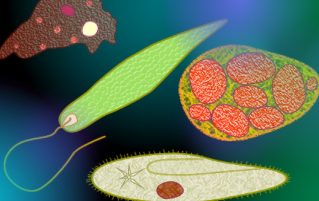

Cells are the building blocks of living organisms, and most of them are so small you cannot see them without a microscope. However, there are exceptions. Acetabularia is a single-celled green algae, and it can grow up to 10cm tall!! Or how about gromia sphaerica – a single-celled amoeba which is found deep under the ocean, and can grow up to 1.5 inches in diameter.
Some cells can also be very dangerous. For example, the dileptus. Species of this uni-cellular organism are found in salt and fresh water, and in soils and mosses. They are aggressive predators, using their proboscides (like a needle) to consume the cytoplasm out of other cells! Like mini-vampires!!
If you are in Year 7 or above, you need to be able to recognise the difference between bacterial cells, animal cells and plant cells. You should also be able to label and explain the functions of the organelles. For GCSE students it also explains the difference between prokaryotic and eukaryotic cells.
To help you understand, check out Part 1 of our “How to work with Cell Biology” guide. This describes the structure of an animal cell, a plant cell, and a bacterial cell. It also included some GCSE questions for you to practice, and answers to check your understanding.
Click on the picture below to see the guide.
If you found this useful and think you would benefit from some additional help please contact us.
We welcome guest bloggers.
